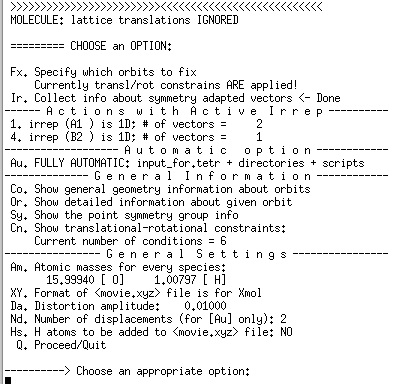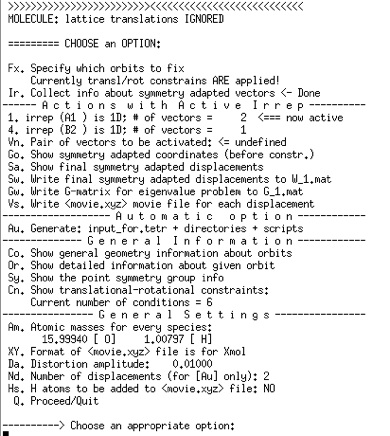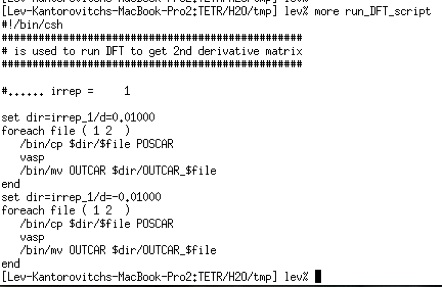Vibrations of H20: Part 1


Vibrations of H20: Part 1


If you now look into your current directory, you will find that tetr created a number of files and a structure with two subdirectories irrep_1 and irrep_4 (below):
7. Use Ir to obtain symmetry adapted linear combinations of atomic displacements (below).

It is seen that only irreps A1 and B2 enter, the former one two times and the latter - a single time. Altogether we have 3 linear combinations of displacements, as it should be.
8. At this point one can create a movie corresponding to vibrations of any of the three degrees of freedom. E.g. type 1 to activate the irrep A1, below:

New options appeared which allow to check in detail vectors of this particular irrep A1. It is also possible to create a movie file (xyz format) to animate any of the two vibrations of this irrep (option Vs).
9. We will however proceed with the generation of all the necessary information for the vibration calculation. As we use frozen phonon method, we should first make sure that atomic displacements needed to work out the elements of the force constant matrix are small enough, but not too small, otherwise the forces on atoms will be too noisy. Normally, the value of the displacement amplitude of 0.01 is a good choice, but you can change it via Da. Also, two displacements will be currently made for each degree of freedom (option Nd), this is normally enough.
As expected, there are 2 input files as this irrep is 2-dimensional. In addition, tetr has created a script run_DFT_script to be used to run VASP (below):
10. To finally generate all the necessary information use Au. You will be prompted to retype the VASP input file again and then read a short instruction on what to do next. Quit tetr.

These contain the VASP input files corresponding to appropriately distorted water molecule, e.g. see below:

We have finished the 1st step. You should now edit the script to replace the two lines calling VASP with whatever you have on your platform.

11 2